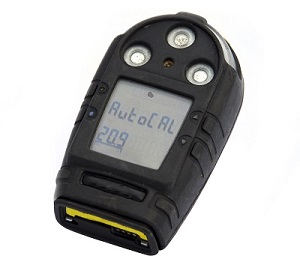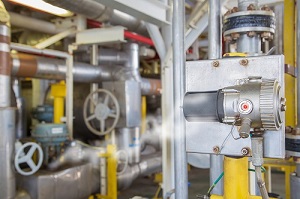There are a variety of industries that use gas daily. Sometimes it can be difficult to tell whether there is a gas leak in a facility. Failure to recognize the presence of the gas or a gas leak could have fatal results. The gas could poison employees and customers working at the facility or cause an explosion. To ensure that any gas leaks are properly detected, there are a variety of commercial gas detection systems that will audibly and visually alert those inside the facility that there is a problem. Here are some of the common commercial gas detection systems.

LPG Gas Leak Detector
LPG gas leak detectors are designed to be used in commercial and industrial kitchens. They are able to detect LPG, a liquefied mixture of propane and butane, and PNG (piped natural gas). The detector will send out warnings to everyone in the building before the gas density in the air reaches a dangerous level. Some kitchens may substitute propane or LPG with compressed natural gas, commonly called CNG, which run through pipes and cylinders. These detectors will usually be mounted on the walls of the kitchen to detect the existence of these gases.
Carbon Monoxide Gas Leak Detector
One of the most common causes of fatal poisoning is from carbon monoxide. While this type of gas is often associated with running cars in areas with little ventilation, it can also come from heating systems, block chimneys, and faulty appliances. The biggest problem with carbon monoxide is that it is odorless, colorless, and a non-irritant, so you won’t know there is a leak until it’s too late. The areas that are at the highest risk of suffering carbon monoxide problems are those with little ventilation or those with a higher CO2 emissions level.
Hydrogen Gas Detector
Hydrogen is an odorless, colors, and tasteless gas that is used in a variety of industrial ways. Some of the most common ways it’s used commercially include the making of ammonia, methanol hydrogen peroxide, plastics, solvents, and fertilizers. Some of the places that are at the highest risk of suffering from hydrogen gas are battery rooms, which put a lot of industries at risk. When installing a hydrogen gas detector, it’s important to have one with a replaceable filter, IP65 enclosure, and an LEL bar graph.
CO2 Detector

Carbon dioxide is expelled from people when they breathe out. Areas that have a lot of people will naturally have higher carbon dioxide levels. For this reason, commercial facilities that are large enclosures are at the highest risk and in most need of a CO2 detector. If the CO2 level rises to a dangerous level, it could cause dizziness, confusion, and headaches in those that are suffering from its effects. Bars, breweries, and restaurants will often have large tanks of CO2 stored which could leak. As this gas is odorless and colorless, it will only be detected by a CO2 detector.
There are a number of gases that could be dangerous in a variety of commercial facilities. Any time a facility is at high risk of a gas leak, they should have the appropriate gas detector to ensure the safety of their employees and customers. Contact DOD Technologies if you’re in need of a gas leakage detection system.






